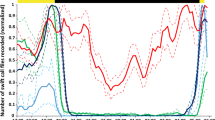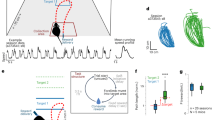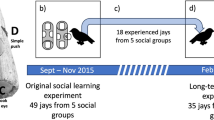Abstract
IN the case of the amphipod sandhopper Talorchestia quoyana (Milne-Edwards) it seems from some experiments that diurnal changes in light stimuli act as triggering and reinforcing factors; but there is also a conservative timing mechanism or ‘memory’ factor (the word is used in this sense) potent for up to a week which will maintain an impressed rhythm of activity in the absence of conflicting environmental change.
This is a preview of subscription content, access via your institution
Access options
Subscribe to this journal
Receive 51 print issues and online access
$199.00 per year
only $3.90 per issue
Buy this article
- Purchase on Springer Link
- Instant access to full article PDF
Prices may be subject to local taxes which are calculated during checkout
Similar content being viewed by others
References
Cloudsley-Thompson, J. L., J. Exp. Biol., 28, 165 (1951); 29, 295 (1952).
Henkes, H. E., J. Exp. Biol., 29, 178 (1952).
Park, O., Ecol. Monogr., 10, 485 (1940).
MacIntyre, R. J., M.Sc. thesis in zoology, Canterbury University College, New Zealand (1954).
Author information
Authors and Affiliations
Rights and permissions
About this article
Cite this article
FEATHERSTON, D., MACINTYRE, R. Learning and Daily Activity in a Sandhopper. Nature 179, 381–382 (1957). https://doi.org/10.1038/179381b0
Issue Date:
DOI: https://doi.org/10.1038/179381b0
This article is cited by
-
Environmental influence on the locomotor activity rhythm of the sand-shore amphipod Talorchestia deshayesi
Marine Biology (1982)
-
Environmental influence on the locomotor activity rhythm of Talitrus saltator (Crustacea: Amphipoda)
Marine Biology (1980)
-
An analysis of the activity rhythm of the sand beach amphipod,Talorchestia quoyana
Journal of Comparative Physiology ? A (1976)
Comments
By submitting a comment you agree to abide by our Terms and Community Guidelines. If you find something abusive or that does not comply with our terms or guidelines please flag it as inappropriate.



